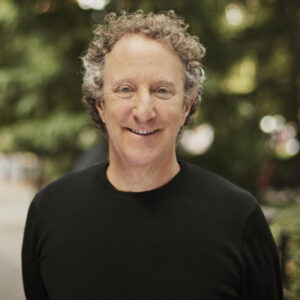Attendees of the 2025 Local News Summit.
This essay series was originally published in the Columbia Journalism Review.
This is a moment of profound urgency for journalists as the Trump administration breaks long-standing norms, attacks major news organizations in the courts and from the briefing room, and blocks access to reporters.
The challenges are particularly acute for local news organizations that have long struggled with business sustainability, digital transformation, and reader growth. Now they are facing a new set of concerns as increasing audience polarization and legal and regulatory attacks on independent journalism have taken root.
With these conditions as backdrop, about a hundred local news leaders met in New Orleans in late January for the fourth annual Local News Summit, hosted by the Lenfest Institute for Journalism and Aspen Digital. Summit participants—including from large urban news enterprises and small rural shops; for-profit, nonprofit, and public media; academia; and tech—resolved to better serve communities with fact-based news.
Meeting just ten days after the inauguration, there was a palpable sense—not unique to the news business—of an industry caught on its back foot by the pace and intensity of Trump administration executive action, some of it aimed at the heart of local news. On the summit’s second day, during a session on threats to journalists and journalism, our phones buzzed with push alerts about an FCC plan to investigate sponsorship underwriting at NPR and PBS.
“An attack on one is an attack on all.“
– Eric Meyer, Marion County Record Publisher
Amid these challenges, there was a deeply felt commitment to reinvention and collaboration. Participants advanced the idea of a “NATO for News” and other forms of collective action—inspired in part by the strong response after a 2023 police raid of the Marion County Record, a family-owned Kansas weekly. “An attack on one,” Record publisher Eric Meyer said at the summit, “is an attack on all.”
“At the same time that we see a massive decline and trust in journalistic outlets, content creators have managed to form strong personal bonds with their audiences.“
– Melissa Bell, Chicago Public Media Publisher
For the first time, the Local News Summit welcomed over a dozen young news creators and entrepreneurs, who reach vast audiences on TikTok, YouTube, Substack, and other platforms where the public increasingly seeks and finds news.They offer a potential path forward. “At the same time that we see a massive decline and trust in journalistic outlets, content creators have managed to form strong personal bonds with their audiences,” Chicago Public Media publisher Melissa Bell writes in her reflection.
The Local News Summit covered three overlapping topics: “Next-Gen News,” the reinvention and revitalization of news on platforms reaching larger audiences of younger users; “Threats to Journalists and Journalism,” the broad array of legal, regulatory, and systemic threats to the business and practice of independent journalism and prospective solutions; and “Truth and Trust,” the challenges to American consumer trust in news media, some at the hands of our critics and detractors, others self-inflicted.
Each topic was the subject of in-person provocation and follow-on essays from leaders who have helped us broaden our thinking about how to continue to advance the cause of local news:
- Dean Baquet spoke passionately about the value—and prospective leadership—of local journalism in our polarized era: “The most visible struggles may be national journalism. But maybe the most important, and the most long-lasting, are in local journalism, the place where the next generation of leaders is already emerging.”
- Melissa Bell highlighted the need to embrace content creators and a new generation of journalists: “They are hugely popular, and yet media companies are still moving too slowly to cultivate this talent within their organizations. We do that at our own peril.”
- Jeremy Gilbert discussed how the products of local newsrooms have not evolved rapidly enough to keep up with news consumers’ expectations—especially younger ones: “We cannot dismiss consumer preference as foolish or frightening—as we have done so often in the past.”
- Kevin Merida spoke on the need for journalists to get out into their communities and better understand their neighbors: “Mastering the enormous challenge of understanding more completely, with greater specificity, our neighbors and neighborhoods, their needs and conditions, is essential for our profession’s survival. And its growth.”
- Joel Simon outlined the threats journalists and news organizations are currently facing—and shared strategies for how to combat them: “We need to think differently about our role. We are not on offense—fighting to change the narrative. We are playing defense, fighting to protect our rights.”
- Richard J. Tofel called for much greater urgency and continued reinvention: “Many of us have the sense that local news needs not just to be reengineered as a business matter…but also to be reinvented editorially.”
The road ahead will be rocky, but we left our time in New Orleans inspired. We are encouraged by the resolve, the creativity, and the inventiveness of local news reporters, editors, and publishers, and all those who support their vital work. As Bette Davis said in 1950’s All About Eve, “Fasten your seatbelts, it’s going to be a bumpy night.”
Dive In
Read news leaders’ essays.
Local Journalism Is the Foundation for the Future
Former New York Times Executive Editor Dean Baquet describes the value—and prospective leadership—of local journalism in our polarized era.
Who Gets to Be Called a Journalist, Anyway?
Chicago Public Media CEO Melissa Bell highlights the need to embrace content creators and a new generation of journalists.
The Summit was supported by funding from Microsoft, the MacArthur Foundation, the Patrick J. McGovern Foundation, and the John S. and James L. Knight Foundation.






